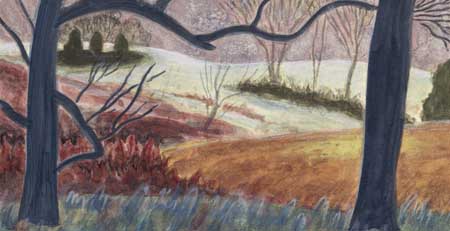The best, where you least expect it
A few days ago, I read another great piece from Roberta Smith. It’s ostensibly about how museums need to give far more prominence to folk art and outsider art. Yet it’s really about the need to break out of many of the preconceptions that have ruled art for so long. In it, she hit many of her refrains about how the art world needs to shrug off conventional guidelines for determining what’s “important” in art. She’s said it before, she’ll say it again. She suggests, sensibly, that it might stir new insights to give folk art far more prominence, juxtaposed with mainstream art from the same period. Her larger point, though is that it would also make sense to abandon the exhausted vision of art as marching forward through various periods toward something better, or more relevant, or more . . . X . . . pick the adjective of your choice. May I suggest scrapping the word “important,” since the best literature, movies, art and music aren’t about anything but the totality of life, which isn’t great or trivial, or important or unimportant–it just is. Being intensely aware of the odd fact of just being, and only that, seems to me the highest aim of art, even though it often seems to amount to nothing. The hard part is simply being fully aware of what’s there, the isness of whatever it is you behold. This used to be the imperative of art, to simply pay passionate attention to whatever it is that’s before you, even if it’s nothing more than the work itself, back before art lowered its aim so dramatically over the past fifty years. (Spare me the exceptions to this, I know there are a ton of them.) Smith has been a skeptic about a lot of fundamental assumptions through the years: that artists need to have an art school degree, that we should refer to making art as a “practice,” as if it were a profession like medicine or jurisprudence, and that the people who determine what’s great and what isn’t always know what they’re doing. Anyway, it’s a great piece, which extracts more significance than I ever expected from a subject that sounds at first as if it ought to be dusted off for a dry discussion on how to curate one’s permanent collection . . .
What surprised and pleased me, though, is that she brought to mind one of my favorite artists, Nick Blosser, a painter in Tennessee whose work I saw many years ago at a little solo exhibition at the Adam Baumgold Gallery on the Upper East Side, after spotting a notice in The New Yorker. Blosser strikes me as someone who works in a style close to folk art, and he doesn’t seem to fit anywhere into that old historical agenda that sees 20th century art as a march from one outmoded movement to the next, toward greater and greater . . . what . . . freedom? . . . (insert whatever adjective you picked to fill in the blank above.) He simply works in an extremely personal way, building very small pictures in a style that at first seems primitive and then achieves a kind of haunting, dreamlike music, full of the seasons, in love with the woods, and seemingly ecstatic about almost anything he happens to see. He seems to have paid no mind to the course of modern and postmodern art. He may look like one, but he’s no outsider. He’s won two National Endowment for the Arts fellowships and a Rome Prize fellowship. Yet he’s done it all without trying to fit into the cool, cerebral, ironic sophistication that has ruled visual art for so many of the years he’s been working. The vitality of what he does, for me, stands as a confirmation of what Smith says in her piece: the freshest and best can come from the most unexpected places and from people who could say, as Oscar said to Lucinda, “I don’t fit.” Now there was an artist I admire, that Oscar. He was so much of an outsider, he didn’t even exist.

Comments are currently closed.